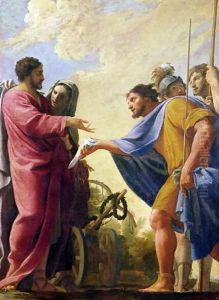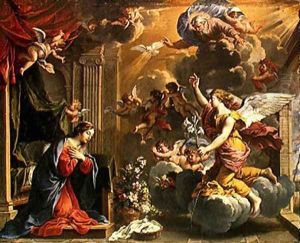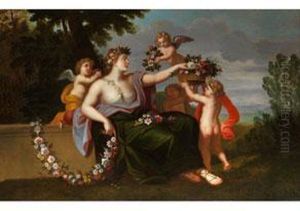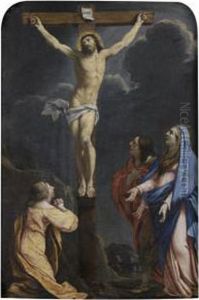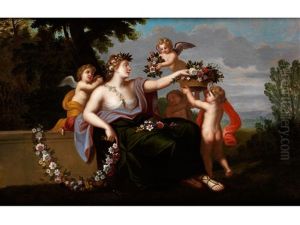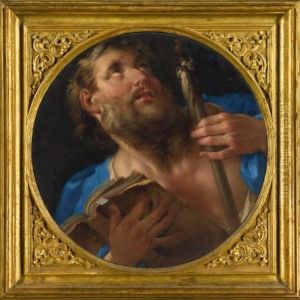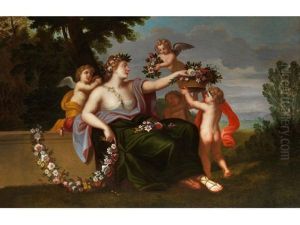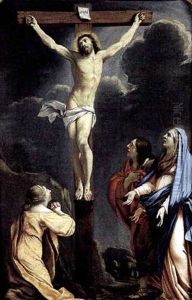Charles Francois Poerson Paintings
Charles François Poerson was a French painter born in 1609 in Vic-sur-Seille, a small town in the Lorraine region of France. He was the son of Laurent Poerson, a painter of some local repute. Charles François was an integral part of the French Baroque movement, which was characterized by grandeur, sensuous richness, and dramatic intensity.
Poerson moved to Paris to pursue his artistic career, and his talent was recognized early on. He became a student and later a collaborator of the well-known French painter Simon Vouet. Under Vouet’s guidance, Poerson honed his skills and developed a style that combined a sense of elegance with dynamic compositions. After Vouet’s death in 1649, Poerson succeeded him as the head of his studio, taking over many of his commissions and patrons.
Poerson's work is often noted for its clarity of composition and the luminosity of its colors. He painted a variety of subjects, including religious scenes, mythological stories, and portraits. His art was marked by a certain poetic quality and a graceful handling of traditional themes, which made him a favored artist among the French nobility and the Catholic Church.
Throughout his career, Poerson received significant commissions that reflected his status as a leading painter of his time. One of his most notable works is the ceiling painting in the chapel of the Sorbonne, titled 'The Glory of Saint Louis.' He also worked on the decoration of the Hotel de Ville in Paris, which was unfortunately destroyed by fire in 1871.
Poerson was also involved in the artistic life of Paris beyond painting. In 1657, he was admitted to the newly formed Académie Royale de Peinture et de Sculpture, an institution that played a crucial role in shaping French art for centuries. His involvement with the Academy further solidified his position within the French art world.
Charles François Poerson's career was a testament to his ability to adapt and thrive in the ever-changing artistic landscape of 17th-century France. His legacy is felt in the works that still exist today and in the influence he had on subsequent generations of artists. He passed away in Paris in 1667, leaving behind a rich body of work that continues to be studied and admired for its contribution to the Baroque period in French art.
